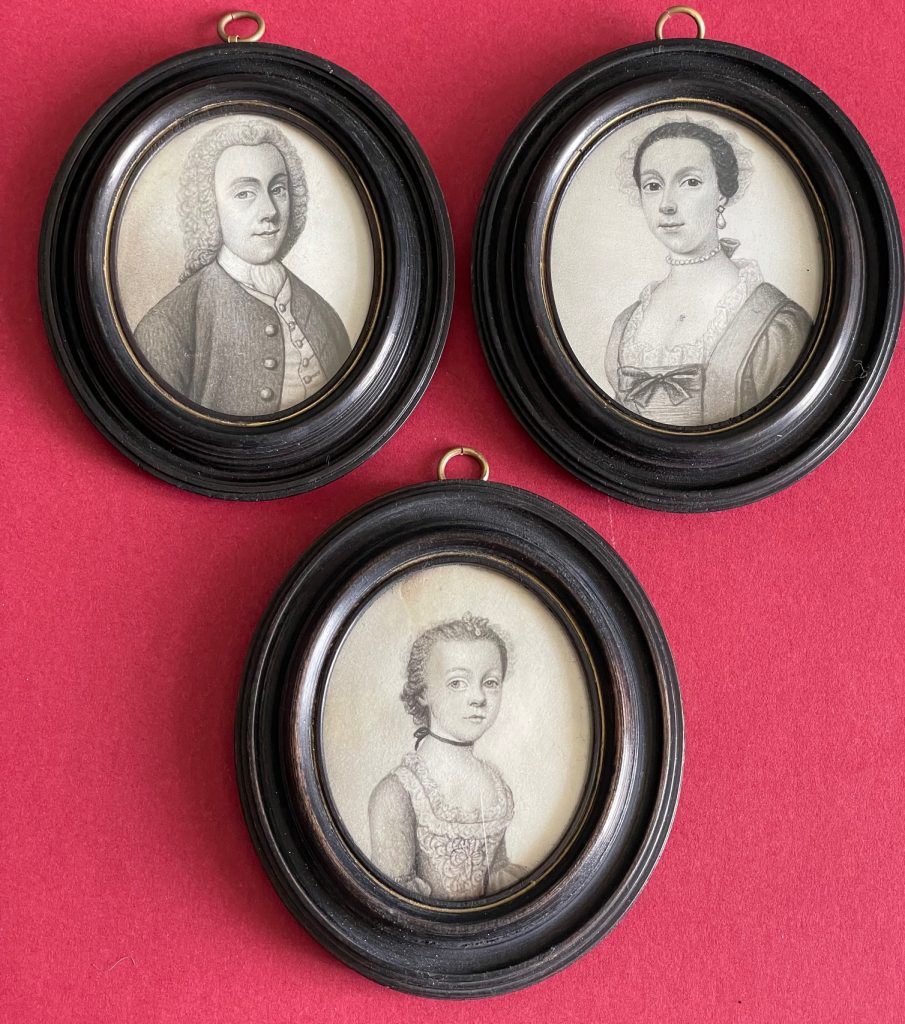
Portrait miniatures, silhouettes, portraits & an omnium-gatherum of historical interest & character.
Enquiries and orders
The Lacons
James Ferguson
Sold
This distinctive style of portraiture is referred to as ‘plumbago’, a term that derives from the lead in pencils. This medium was used to good effect by the Scottish artist James Ferguson during the mid-18th century to create small highly detailed portraits in soft graphite and India ink on vellum.
The sitters shown here are John Lacon (or Laycon) wearing a collarless coat and a full-bottomed wig, his wife Elizabeth wearing pearl jewellery, and their young daughter Judith wearing a dress with a beautifully embroidered stomacher and a ribbon choker tied at the back. John Lacon was born in Otley, North Yorkshire in 1710 but moved south to Yarmouth where he married his wealthy first cousin Elizabeth Ward in 1743 when he was 33 and she was 20. Judith was born in 1747. John became a partner in his mother-in-law’s brewery business becoming its sole owner in 1760 whereupon he renamed it Lacons Brewery. Judith died unmarried in 1817, aged 70.
The portraits are presented in turned wood frames with an inner gilt border and are individually labelled on the reverse with the sitter’s details.
The artist and polymath James Ferguson was born into a poor Scottish family. With the help of his father and an elderly neighbour, he taught himself to read and write. As he grew up he developed a love for astronomy and mechanics and was engaged to several masters, some of them encouraging but others treating him cruelly. In 1733 Ferguson was engaged by Sir James Dunbar to clean his clocks and, whilst at his house, met Lady Dipple who asked him to draw needlework patterns for her and her friends. The following year Lady Dipple invited him to stay at her house in Edinburgh where he met Lady Jane Douglas whose portrait he drew several times. Lady Jane sent these portraits to her friends with a recommendation and suddenly Ferguson had a viable business which he was to follow for the next 26 years. Once financially secure, he studied anatomy, surgery and physics but ultimately it was his love of astronomy that was to dominate his life and career. He published several books on astronomy from 1745 onwards.
Item Ref. 7648
Size: framed, 92 x 80mm